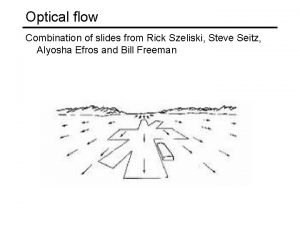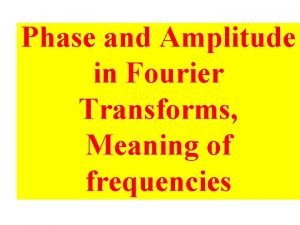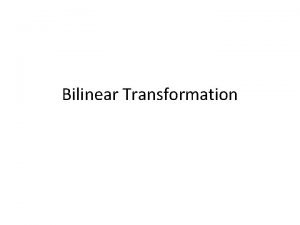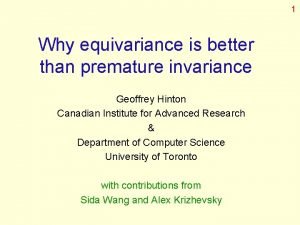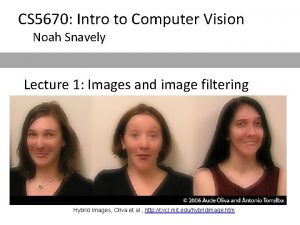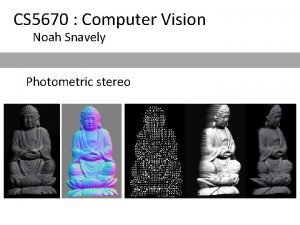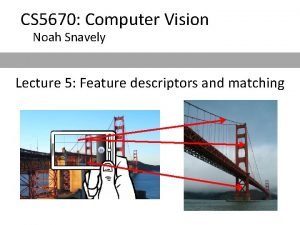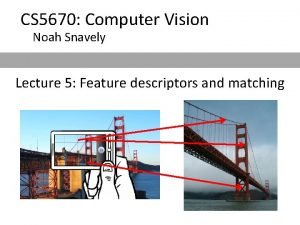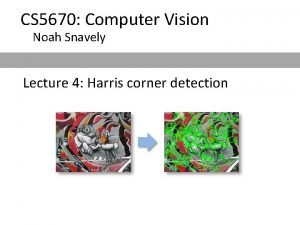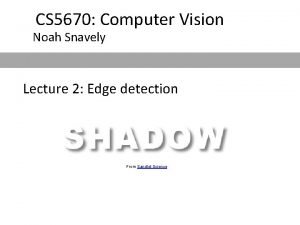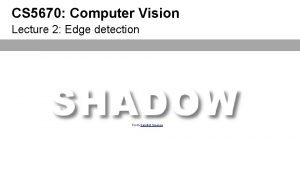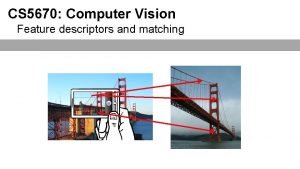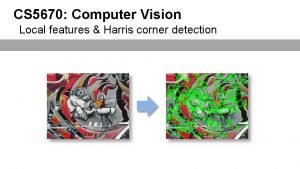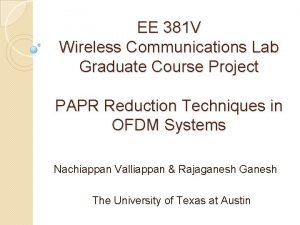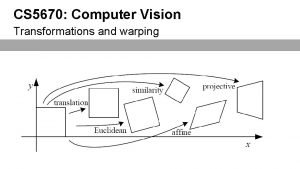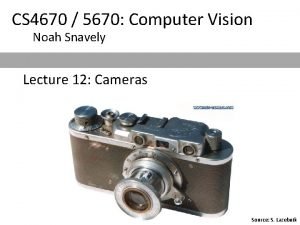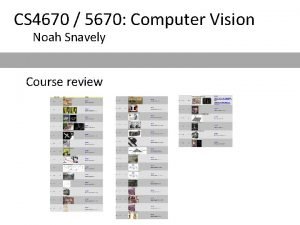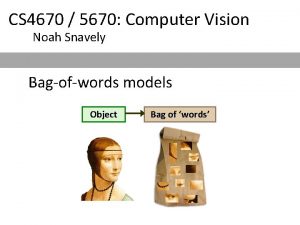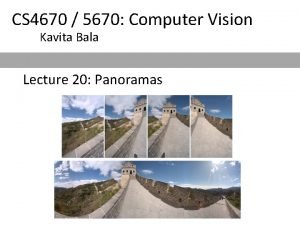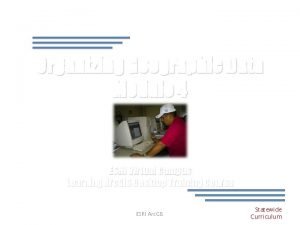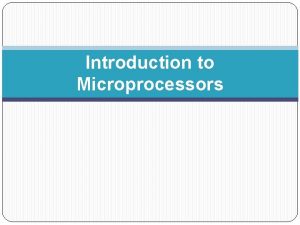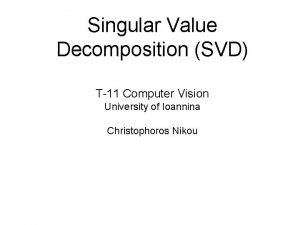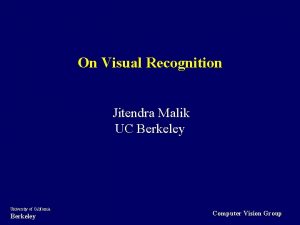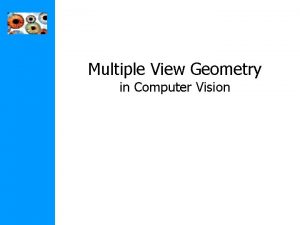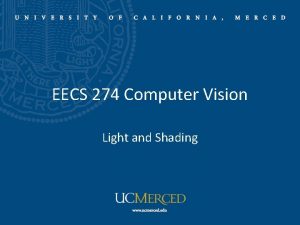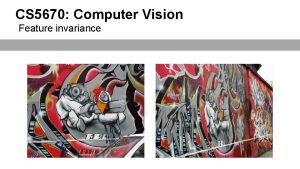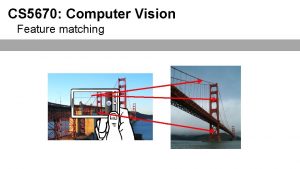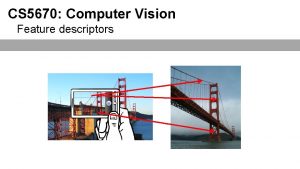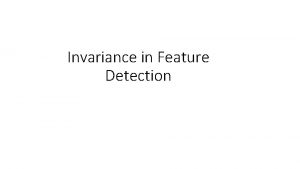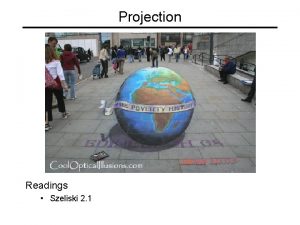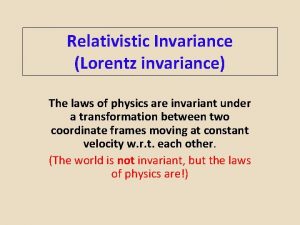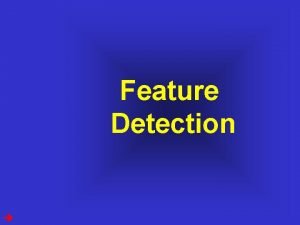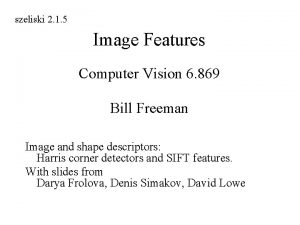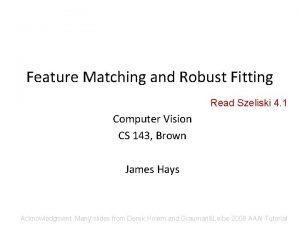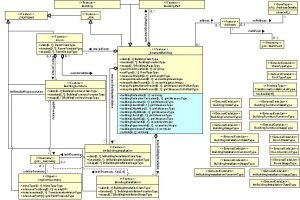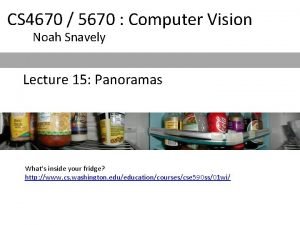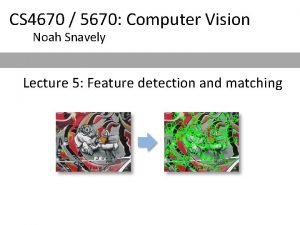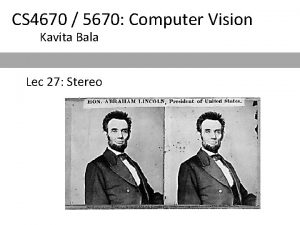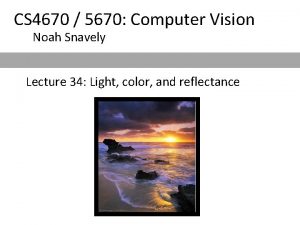CS 5670 Computer Vision Feature invariance Reading Szeliski

































- Slides: 33

CS 5670: Computer Vision Feature invariance

Reading • Szeliski: 4. 1

Announcements • Project 1 code due tonight at 11: 59 pm • Project 1 artifact due Wednesday, 2/10, at 11: 59 pm • Quiz 1 in class this Wednesday, 2/10 (first 10 minutes of class) – Closed book / closed note • Project 2 (Feature Detection & Matching) will be out next week – To be done in groups of 2

Local features: main components 1) Detection: Identify the interest points 2) Description: Extract vector feature descriptor surrounding each interest point. 3) Matching: Determine correspondence between descriptors in two views Kristen Grauman

Harris features (in red)

Image transformations • Geometric Rotation Scale • Photometric Intensity change

Invariance and equivariance • We want corner locations to be invariant to photometric transformations and equivariant to geometric transformations – Invariance: image is transformed and corner locations do not change – Equivariance: if we have two transformed versions of the same image, features should be detected in corresponding locations – (Sometimes “invariant” and “equivariant” are both referred to as “invariant”) – (Sometimes “equivariant” is called “covariant”)

Harris detector invariance properties: image translation • Derivatives and window function are equivariant Corner location is equivariant w. r. t. translation

Harris detector invariance properties: image rotation Second moment ellipse rotates but its shape (i. e. eigenvalues) remains the same Corner location is equivariant w. r. t. image rotation

Harris detector invariance properties: Affine intensity change I a. I+b • Only derivatives are used invariance to intensity shift I I + b • Intensity scaling: I a I R R threshold x (image coordinate) Partially invariant to affine intensity change

Harris detector invariance properties: scaling Corner All points will be classified as edges Neither invariant nor equivariant to scaling

Scale invariant detection Suppose you’re looking for corners Key idea: find scale that gives local maximum of f – in both position and scale – One definition of f: the Harris operator

Lindeberg et al, et 1996 Lindeberg al. , 1996 Slidefrom. Tinne. Tuytelaars








Implementation • Instead of computing f for larger and larger windows, we can implement using a fixed window size with a Gaussian pyramid (sometimes need to create inbetween levels, e. g. a ¾-size image)

Feature extraction: Corners and blobs

Another common definition of f • The Laplacian of Gaussian (Lo. G) (very similar to a Difference of Gaussians (Do. G) – i. e. a Gaussian minus a slightly smaller Gaussian)

Laplacian of Gaussian • “Blob” detector minima * = maximum • Find maxima and minima of Lo. G operator in space and scale

Scale selection • At what scale does the Laplacian achieve a maximum response for a binary circle of radius r? r image Laplacian

Characteristic scale • We define the characteristic scale as the scale that produces peak of Laplacian response characteristic scale T. Lindeberg (1998). "Feature detection with automatic scale selection. " International Journal of Computer Vision 30 (2): pp 77 --116.

Find local maxima in 3 D position-scale space s 5 s 4 s 3 s 2 s K. Grauman, B. Leibe List of (x, y, s)

Scale-space blob detector: Example

Scale-space blob detector: Example

Scale-space blob detector: Example

Scale Invariant Detection Note: The Lo. G and Do. G covariant operators are both rotation equivariant

Questions?

Feature descriptors We know how to detect good points Next question: How to match them? ? Answer: Come up with a descriptor for each point, find similar descriptors between the two images
 Szeliski computer vision
Szeliski computer vision Realviz
Realviz Invariance property
Invariance property Fourier transform amplitude and phase
Fourier transform amplitude and phase Lavaan measurement invariance
Lavaan measurement invariance Bilinear transformation and impulse invariance
Bilinear transformation and impulse invariance Equivariance vs invariance
Equivariance vs invariance Human vision vs computer vision
Human vision vs computer vision Pre reading while reading and post reading activities
Pre reading while reading and post reading activities Cs 5670
Cs 5670 Cs 5670
Cs 5670 Cs5670
Cs5670 Cs 5670
Cs 5670 Cs 5670
Cs 5670 Cs 5670
Cs 5670 Cs 5670
Cs 5670 Cs 5670
Cs 5670 Cs5670
Cs5670 Pxi-5670
Pxi-5670 Cs 5670
Cs 5670 Cs 4670
Cs 4670 Cs 5670
Cs 5670 Cs 5670
Cs 5670 Cs 5670
Cs 5670 Feature dataset vs feature class
Feature dataset vs feature class Isolated feature combined feature effects
Isolated feature combined feature effects Introduction to microprocessors and microcontrollers
Introduction to microprocessors and microcontrollers Cmu 16-385
Cmu 16-385 Kalman filter computer vision
Kalman filter computer vision Svd computer vision
Svd computer vision Berkeley computer vision
Berkeley computer vision Multiple view geometry in computer vision.
Multiple view geometry in computer vision. Computer vision vs image processing
Computer vision vs image processing Radiometry in computer vision
Radiometry in computer vision

